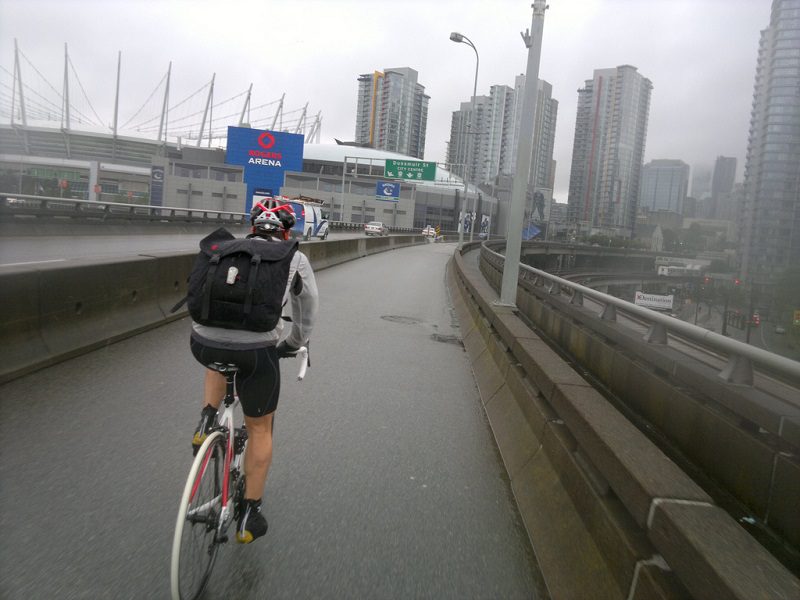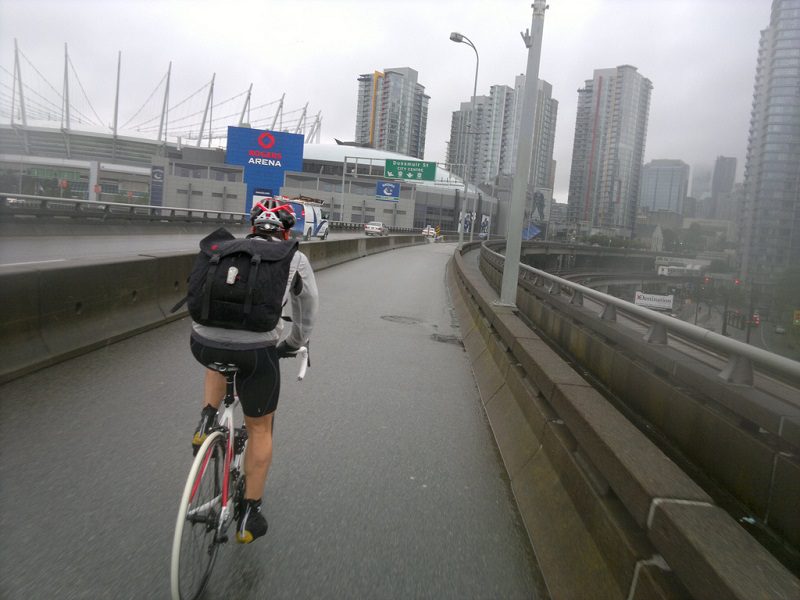Want to commute by bike this fall? With Labour Day upon us, here’s a few tips to get you saddled up right
If you're on the fence, a new season brings a great excuse to mount up, choosing as your default transportation option the best one there is -- the almighty bike.


It’s here!
Labour Day is a time to gather rosebuds while you may, enjoying the last hurrah of summer as you rip up the cross-country trails or sit around the campfire — or both. It’s also, however, a time to be looking ahead, making plans for when the seasons start to change. Some of us lock up our bikes when the winter hits; others, on the other hand, simply layer up, clip in, and brace themselves for the falling temperatures.
And for others still, a new school year, or maybe a return to work after having the summer off, means that the idea of getting around by bike might be being considered all over again. If you’re on the fence, a new season brings a great excuse to mount up, choosing as your default transportation option the best one there is — the almighty bike.
If you’re a first-timer considering two wheels as your mode of conveyance to the lecture hall or the office, here are six entry-level tips to keep your ride safe, fun and secure :
When it comes to clothing, the brighter the colours the better
During the summer months, we get used to the bright mornings and the long, forgivingly sunny days. Dark colours when riding aren’t much of an issue against such a backdrop. The steady settling into late fall and winter that starts with Labour Day, though, means the mornings will soon be darker, the weather dimmer, and the need to be seen that much more critical. Some wear reflective vests; others make sure their jerseys are a bright enough tone that they can be seen from afar. Whatever you wear, especially if your ride gets you out of the house before or just after dawn, make it as easy as possible for others to see you.
Use reflectors, use lights, and use them constantly
This one is a no-brainer, but it’s still important to double up your reflective wear with properly illuminating or reflecting gear. In many cases, having a reflector and a pair of lights — white in the front, red in the back — is ideal. And if you live in Ontario, having those lights is required by law, punishable by a fine recently raised to $110. (Canadian Cycling Magazine will have a feature on the best lights for your buck later this week.)
Wear a helmet. Seriously
It might even be the law where you live. But wherever you are, when it comes to no-brainers, this is the mother of them all. You only get one head.
Know your route
The first time you head out on a bike commute to school or work, the absolute worst thing that could happen, conceivably, is that you might end up taking a terrible route that gets you on to a busy highway, for example. Or maybe there’s a construction zone nearby, who knows? If you’re more accustomed to the car or the bus, the question of how you get somewhere might not matter as much as how fast. Riding a bike as your principal mode of transport, though, means considering the unforeseen and planning accordingly, even if that means taking your time. If possible, scout around your neighbourhood before your first ride and get to know the roads. Otherwise, using websites like Google Maps is a good option, which has a function that shows ideal bike routes in your city. You can also pick up city maps at many local bike shops.
Make eye contact
More effective than shouting your communication with drivers — something confusing at the best of times, and in the case of a misunderstanding, disastrous at the worst — is simply making eye contact when you’re approaching a vehicle. It lets drivers know that you’ve seen them, and for them, it makes you a person as opposed to an anonymous bike bearing down on them. It communicate your intentions, something that’s obviously of vital importance. In effect, it’s a defensive, non-verbal way of telling a driver, “I see you,” as if it’s part of your body language. Communication is important.
Use panniers, not backpacks
This might be a matter of preference, but while they can build considerable drag and potentially slow you down, panniers are superior to backpacks for a number of reasons. For one, there’s the comfort factor: if your ride to work is 25 kilometres in one direction, for example, a heavily-loaded backpack might wear down on your shoulders, causing you soreness after a while. In turn, though, that can also affect the safety and performance of your ride: it shifts your centre of gravity higher, and through any soreness that results from wearing one, it can change your riding position. Panniers sit lower, obviously, and can hold more weight than may be comfortable to carry on your back. Also, the sweat. Panniers limit back sweat.
Either double up your locks or get the strongest one possible
To many seasoned riders, a cringe-inducing thing to see on the frame of another bike is one of those cheap, flimsy locks, the type you can buy for about ten dollars. To most would-be bike thieves, they’re about the easiest thing in the world to break. All it takes is persistence and a good pair of bolt-cutters; with such an easily-compromised security option, you’d be bikeless in less time than it took to write this paragraph. A better option by far is a strong, top-of-the-line U-lock, like those made by Kryptonite. They’re on the higher end of the price scale, but with their heavy-duty construction and materials, such locks certainly live up to their brand name.
If you have quick-release wheels, another good idea is to carry an ultra-strong double-looped cable, too, which can then be wrapped around the frame and the wheels and through the U-lock itself to provide an additional layer of protection. It might sound like over-reaching, but take it from an experienced city cyclist: there’s no such thing as being too careful, town or country.
Ride, rinse, repeat!
Lastly, you’ve made a great lifestyle choice by choosing to cycle, so do it often! Make your commuting option a regular part of how you work out. Medical experts advise an average of 150 minutes a week of exercise, so challenge yourself when you’re out there. As you get more comfortable, look for new routes that might have more difficult climbs, or lengthen your commute to include a bit of free time for training. Your body, after all, is your new — and as ever, your best — engine. Keep it well-tuned!
